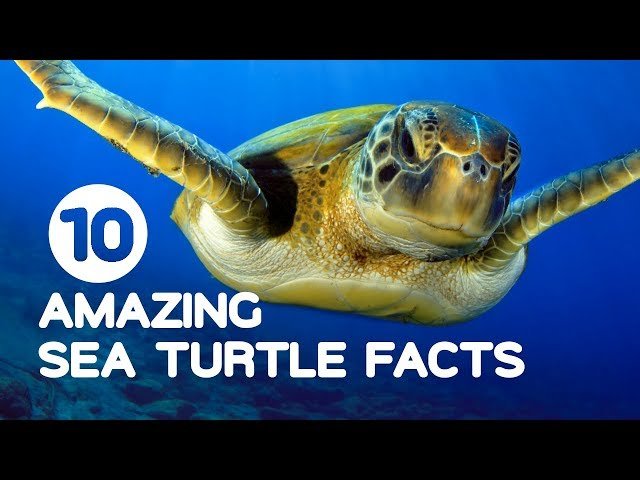
As we dive into the world of sea turtles, think of them as nature’s time travelers. They remind us of a time long past, yet they also face challenges in our modern world. So, grab your metaphorical snorkel gear, and let’s explore ten cool things you probably didn’t know about sea turtles. From their unique nesting habits to their incredible navigation skills, there’s a lot more to these ancient mariners than meets the eye.
1. They Can Live for Over 100 Years
Sea turtles are true champions of longevity. Did you know that some species can live for more than a century? It’s like they’re the wise sages of the sea. The average lifespan varies by species, but loggerhead turtles can live up to 50 years or more, and some green turtles have been known to reach 80 years or beyond.
You might be wondering how researchers determine the age of a sea turtle. They often look at the growth rings in their shells, much like counting tree rings. Each ring represents a year of growth. It’s an incredible reminder that these creatures have been around for a long time, too—some features of their anatomy have hardly changed since the time of the dinosaurs!
2. They Have Unique Migration Patterns
Sea turtles are known for their incredible ability to migrate thousands of miles between feeding and nesting grounds. Some species, like the leatherback turtle, can travel over 10,000 miles each year! That’s like taking a round trip from New York to London and back, all while swimming through the ocean.
What’s even more amazing is that sea turtles navigate using a combination of environmental cues and possibly even the Earth’s magnetic field. Imagine being able to find your way home from anywhere in the world! They rely on the position of the sun, the moon, and even the unique magnetic signature of their nesting beaches. This skill is vital for their survival and helps them return to the same spot where they were born to lay their eggs.
3. They’re Remarkably Adapted for Life in Water
Sea turtles come with a set of adaptations that make them perfectly suited for their aquatic homes. Their streamlined bodies reduce drag while swimming, allowing them to glide effortlessly through the water. Plus, they have flippers instead of feet. This makes them agile swimmers, reminiscent of a graceful dancer performing underwater.
The hard shell, or carapace, serves as armor for protection against predators. It’s fascinating how nature has crafted these creatures to thrive in their environments. While many land creatures have developed characteristics for survival, sea turtles are like living submarines, designed to spend most of their lives in the ocean.
4. Sea Turtles Are All About Family
When it comes to nesting, sea turtles show some truly remarkable family devotion. Female sea turtles return to the exact beach where they hatched to lay their eggs, sometimes after traveling great distances. Once there, they dig a nest in the sand and lay anywhere from 100 to 200 eggs in a single clutch.
After laying their eggs, the mother turtle covers the nest with sand and leaves, making it quite a challenge for predators. However, she won’t stick around to protect them. The baby turtles are on their own once they hatch, making a mad dash to the ocean. It’s a perilous journey, and it’s estimated that only one in a thousand hatchlings survive to adulthood. This story of survival highlights the importance of protecting nesting habitats.
5. They Have Unique Communication Skills
You might be surprised to learn that sea turtles are not silent creatures. They have a range of vocalizations they use to communicate with each other. While underwater, baby turtles, for example, can emit sounds that help them communicate during hatching. It’s almost like they’re all cheering each other on in a race to reach the sea!
Adult sea turtles also produce sounds, especially during mating. These sounds help establish territories or attract potential mates. Even though they are relatively quiet compared to other marine animals, their communication underscores the complex social lives they lead.
6. They’re a Vital Part of the Marine Ecosystem
Sea turtles play an important role in maintaining the health of marine ecosystems. For instance, they help keep seagrass beds healthy by grazing on algae and other plant life. This allows seagrass to thrive and provides habitat for many marine animals.
They also contribute to the nutrient cycle in the ocean. As they consume jellyfish, they help control jellyfish populations, which can sometimes become overpopulated. Think of them as nature’s caretakers, helping to balance the ocean ecosystem in ways we might not initially recognize.
7. They Face Serious Threats
Unfortunately, sea turtles face many threats, and it’s crucial we talk about them. Habitat loss, climate change, and poaching are just a few of the challenges they encounter. For example, rising sea levels can affect nesting beaches, and increased ocean temperatures can disrupt their migration patterns.
Additionally, many turtles fall victim to accidental capture in fishing gear, known as bycatch, which can have devastating effects on their populations. Conservation efforts are essential to protect these ancient mariners. Organizations around the world are working tirelessly to create safe nesting sites and regulate fishing practices, giving these magnificent creatures a fighting chance.
8. They Have a Special Diet
Depending on their species, sea turtles have quite varied diets. Green turtles are primarily herbivores, munching on seagrasses and algae, while loggerhead turtles are more carnivorous, feeding mainly on crustaceans and jellyfish. It’s interesting how their dietary preferences shape their roles in the ecosystem.
Leatherback turtles, the largest of all sea turtles, eat mostly jellyfish. As they glide through the water, they play a key role in controlling jellyfish populations. It’s almost like a balance of nature, ensuring that no one species dominates the oceans.
9. Their Shells Are Not Just for Protection
The shells of sea turtles, often mistaken just as armor, actually serve multiple purposes. Besides providing protection from predators, shells help with buoyancy. The unique structure of their shells allows them to float more easily, making swimming less energy-intensive.
They also play a role in temperature regulation. Sea turtles are ectothermic, meaning their body temperature depends on the surrounding environment. Their shells help them maintain a stable temperature while basking in the sun or cooling off in the ocean waters.
10. They Inspire Conservation Efforts
Finally, sea turtles have become symbols of marine conservation efforts around the world. Their plight has united people across different cultures in the fight to protect their habitats. Many coastal communities have embraced eco-tourism focused on sea turtles, allowing visitors to experience these amazing creatures while supporting their conservation.
From local awareness campaigns to global initiatives, the stories of sea turtles resonate with people everywhere, reminding us of our responsibility to protect our planet’s oceans. As you learn more about sea turtles, you might feel inspired to get involved, whether by volunteering, donating, or simply spreading the word about these incredible animals.
In conclusion, sea turtles are truly remarkable creatures with a complex web of adaptations, behaviors, and challenges they face. From their lasting lifespans to their vital role in marine ecosystems, these ancient reptiles continue to captivate our imaginations. Understanding and protecting them not only safeguards their future but also ensures the health of our oceans. So the next time you think about sea turtles, remember the cool facts you’ve learned, and consider how you can support their journey in our ever-changing world.

